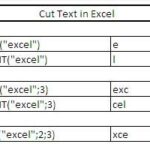How to make animated graphs in Excel
Creating animated graphs in Excel itself is not straightforward, as Excel does not directly support animation within charts. However, you can simulate animation through creative use of Excel’s features like scroll bars, form controls, and cell formulas to dynamically update graphs. Check how to create a simple animated graph using form controls.
Table of Contents
Step 1: Prepare Your Data
Arrange your data in a table format. For a dynamic line chart as an example, you might have dates in column A and values in column B.
Step 2: Insert a Scroll Bar Form Control
- If not already enabled, go to File > Options > Customize Ribbon. Check the box for the Developer tab.
- Go to Developer > Insert > Scroll Bar (Form Control).
- Click and drag on the sheet to draw the scroll bar.
Step 3: Link Scroll Bar to a Cell
Right-click the Scroll Bar and choose Format Control.
Under the Control tab, link the scroll bar to a blank cell (e.g., C1) by entering the cell reference in the Cell link box. Set the Minimum value to 1, the Maximum value to the number of data points minus the number of points you want to display at once, and the Incremental change to 1. This means that each click on the scroll bar arrows (or clicking in the scroll bar track) will change the linked cell’s value by 1, moving the animation forward or backward one step at a time.
Step 4: Create a Dynamic Range
Go to Formulas > Name Manager > New. Name your dynamic range (e.g., “AnimatedData”).
Use the OFFSET function to create a dynamic range. For instance: =OFFSET($A$1,$C$1,0,10,1)
This formula creates a range that starts at A1, moves down a number of rows based on the value in C1, and spans 10 rows down. Adjust the range and offsets according to your data structure.
Step 5: Create the Graph
Go to Insert > Charts and choose the type of chart you’d like to animate (e.g., Line Chart).
When selecting the data for your chart, use the dynamic range you’ve created. You might need to enter it directly into the formula bar. For example: =Sheet1!AnimatedData
Step 6: Interact with Your Animated Graph
As you interact with the scroll bar, the chart updates to show different segments of your data dynamically, creating an animation effect as you scroll through time or data points.
Besides line charts, you can animate bar chart, scatter plot, and more using the same technique.



